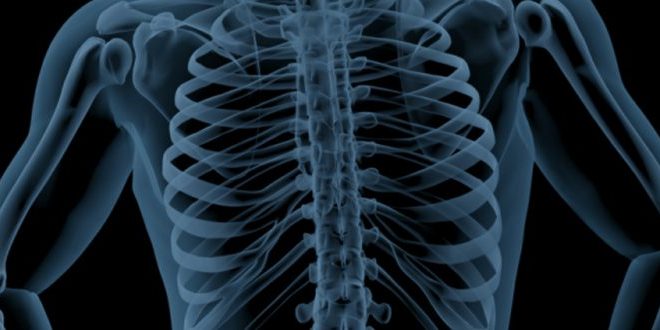Addressing TMJ Disorders with Cranial Chiropractic
Jaw pain, clenching, headaches, and facial tension often stem from more than the joint itself. Imbalances in cranial bones, nerve pathways, and stress patterns can all fuel TMJ dysfunction. Gentle cranial chiropractic techniques restore balance to the skull, jaw, and nervous system, reducing pressure and promoting long-term relief. This whole-body approach helps resolve symptoms while supporting overall nervous system health.

If you’ve ever dealt with jaw pain, clicking, clenching, or that tight, locked feeling in your face—you know how disruptive TMJ disorders can be. From difficulty chewing and chronic tension to ear pressure and headaches, the effects of TMJ reach far beyond the jaw itself. And yet, too often the focus stays only on the joint, ignoring the deeper systems at play.
The truth is, many TMJ issues don’t begin in the joint—they stem from imbalances in the cranial bones, nervous system pathways, and the body’s natural response to stress. That’s why bite guards and dental adjustments often fall short. They may help manage symptoms, but they rarely address the root.
At Mountain Movement Chiropractic & Natural Health, we take a different approach. TMJ disorders are not treated in isolation—they're assessed within the full context of the cranial system, including the skull, jaw, upper neck, and brainstem. We look at how tension patterns, stress, and neurological interference affect the way your jaw moves, holds pressure, and responds to daily use.
Using gentle, hands-on cranial chiropractic techniques, we help restore motion to the bones of the skull, relieve nerve compression, and bring the jaw back into balanced alignment—without force, popping, or aggressive manipulation. This approach not only provides lasting relief from TMJ symptoms, but also supports the body’s ability to regulate stress and restore calm through the nervous system itself.
Understanding TMJ Disorders
The temporomandibular joint (TMJ) is one of the most complex and frequently used joints in the human body. It connects your jawbone (mandible) to your skull at the temporal bone—allowing you to chew, speak, yawn, and express emotion through facial movement. Because it’s constantly active and surrounded by sensitive structures like cranial nerves, muscles, and blood vessels, even subtle dysfunction can lead to a ripple effect of uncomfortable symptoms.
What Is TMJ Dysfunction?
TMJ dysfunction, sometimes called TMD, occurs when the jaw joint becomes irritated, imbalanced, or restricted. This doesn’t just affect the joint itself—it often involves the muscles, ligaments, and nerves surrounding the jaw.
Common symptoms of TMJ dysfunction include:
- Clicking, popping, or grinding sounds when opening or closing the mouth
- Locking of the jaw in an open or closed position
- Pain in the jaw, temples, or face
- Ear pressure, ringing, or a feeling of fullness
- Tension headaches
- Facial tightness or sensitivity
- Difficulty chewing or talking comfortably
- Neck and shoulder tension associated with jaw strain
While many patients try mouthguards, muscle relaxers, or dental adjustments, these interventions often miss a critical piece of the puzzle: the cranial system.
What Causes TMJ Dysfunction?
There is rarely a single cause of TMJ dysfunction. More often, it’s the result of multiple stressors converging on a vulnerable system. These may include:
- Clenching and grinding (bruxism): Often unconscious, especially during sleep. This creates chronic stress on the joint and surrounding muscles.
- Cranial bone misalignment: When the bones of the skull—especially the temporal and sphenoid bones—are restricted, they can alter the alignment and movement of the jaw.
- Neck and postural imbalances: Forward head posture, upper cervical tension, or uneven muscle tone can directly influence how the jaw moves and rests.
- Emotional and physical stress: The jaw is a common place where the body stores tension. Many people literally "clench" their stress.
- Trauma or dental work: Even well-meaning dental procedures can affect cranial motion and nerve signaling if not followed by appropriate structural support.
The Cranial Connection to Jaw Dysfunction
Cranial Bones and Sutures: How Structure Shapes Function
The skull is made up of 22 bones, joined by sutures—flexible seams that allow for subtle movement. These micro-movements are essential for cerebrospinal fluid flow, neurological signaling, and overall cranial rhythm.
When these bones become tight, rotated, or compressed—whether from trauma, clenching, or postural strain—they begin to impact jaw mechanics. For example:
- A compressed temporal bone can alter how the jaw opens and closes.
- Restricted sutures can change tension patterns in the muscles that control chewing and speech.
- These structural imbalances create asymmetrical movement, misalignment, and often pain or popping in the TMJ.
Key Players: The Temporal and Sphenoid Bones
Two of the most influential bones when it comes to jaw function are:
- Temporal bone: This forms the socket for your jaw joint and is deeply affected by cranial tension and head positioning.
- Sphenoid bone: Often called the "keystone" of the skull, it supports many other cranial bones and is closely linked to sinus pressure, visual processing, and jaw symmetry.
The Role of Cranial Nerves in TMJ
Your jaw is also heavily influenced by your cranial nerves, particularly:
- Trigeminal nerve (Cranial Nerve V): The main sensory nerve of the face and motor nerve for jaw muscles. When irritated by cranial compression or inflammation, it can trigger pain, clenching, and hypersensitivity.
- Vagus nerve (Cranial Nerve X): While not directly responsible for jaw movement, the vagus regulates parasympathetic activity (your rest-and-digest system). When vagal tone is low due to cranial tension, it can heighten your stress response—amplifying jaw tension, clenching, and even digestive upset associated with TMJ flare-ups.
Cerebrospinal Fluid Flow and Pressure Regulation
Cranial motion plays a key role in circulating cerebrospinal fluid (CSF)—the fluid that cushions the brain and spinal cord. When cranial bones are restricted, CSF flow can become sluggish. This leads to increased intracranial pressure, poor drainage, and inflammation around sensitive structures like the TMJ and ear canal.
Patients often experience:
- A sense of fullness or pressure in the jaw and ears
- Facial swelling
- Recurrent sinus or ear congestion that mimics TMJ symptoms
What Is Cranial Chiropractic Care?
Cranial chiropractic care is a specialized, gentle approach that focuses on the motion and alignment of the bones of the skull, jaw, and upper neck. Unlike traditional adjustments that often involve high-velocity thrusts, cranial work uses precise, light-touch techniques to release deep restrictions and restore balance to the nervous system—right at its source.
For those struggling with TMJ disorders, cranial chiropractic offers a safe and effective path that addresses the root cause of dysfunction without triggering more tension or pain.
How It Works
The goal of cranial care is to help the bones of the skull and face move in harmony, relieving stress on the joints, nerves, and connective tissues that support the jaw and head.
Here’s how it helps:
- Releases restrictions in cranial sutures: Over time, the flexible seams between skull bones can become compressed due to stress, trauma, or postural strain. Gentle release of these areas improves motion and helps normalize pressure in the cranial system.
- Reduces pressure on cranial nerves: The trigeminal and vagus nerves play a key role in jaw movement, facial sensation, and stress regulation. When these nerves are compressed, symptoms like clenching, headaches, or TMJ pain can escalate. Cranial work relieves that tension.
- Restores balance and movement in the jaw and surrounding structures: By improving the relationship between the skull, upper cervical spine, and jaw, the entire system begins to function more smoothly—with less grinding, clicking, or strain.
Why It’s Ideal for TMJ Disorders
Patients dealing with TMJ dysfunction are often sensitive, inflamed, and already fatigued by years of pain or misdiagnosis. The last thing they need is more intensity.
Cranial chiropractic is:
- Non-invasive and calming: There’s no cracking, no sudden movement—just intentional, neurologically based care.
- Safe for sensitive cases: Whether you've experienced trauma, chronic stress, or past dental interventions, cranial work meets your system where it is—gently.
- Designed for long-term healing: Because it works directly with the nervous system, cranial chiropractic doesn’t just mask symptoms—it helps retrain your body to stop creating them.
Healing the Jaw Starts at the Skull
If you’ve been dealing with TMJ symptoms—jaw pain, popping, clenching, facial pressure—you’ve likely tried dental guards, pain relievers, or maybe even been told to “just manage the stress.” But the truth is, TMJ disorders are rarely just about the jaw. They’re deeply tied to how your cranial bones move, how your nervous system functions, and how your body responds to tension as a whole.
The jaw is one part of a much larger system. And until you address that system—starting at the skull—you’re likely chasing short-term fixes that never fully stick.
At Mountain Movement Chiropractic & Natural Health, our cranial approach doesn’t just mask symptoms—it helps your body repattern how it holds, moves, and reacts. By integrating cranial work into a neurological reset model, we help patients find lasting relief that goes beyond the jaw… and into the nervous system itself.
📍 Mountain Movement Chiropractic & Natural Health
1901 Laurens Road Suite E.
Greenville, SC 29607
📞 (864) 448-2073
🌐 mountainmovementcenter.com
📆 Appointments available Tuesday–Friday
💻 Virtual consults available by request
🔗 Connect with us:
Facebook | YouTube | X (Twitter)

We Treat the
Toughest Cases
We'd love to talk with you about yours. Ask us anything and we will get back to you with a detailed answer about your case.

.jpg)




